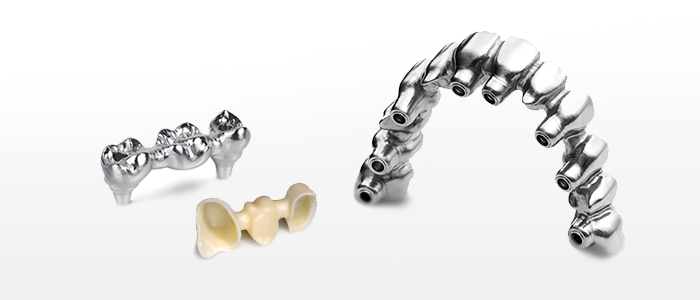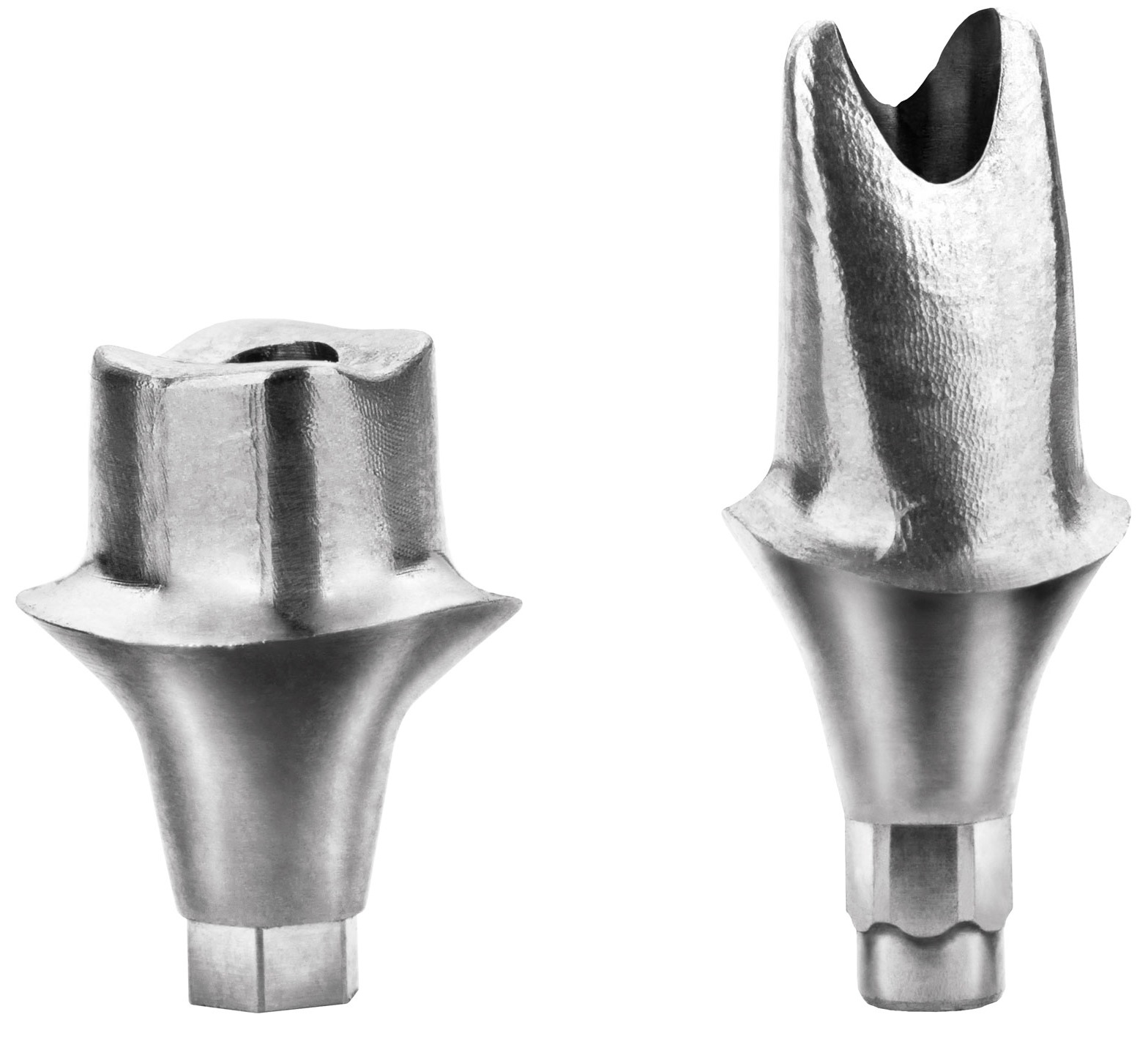LASAK CadCam bridges and abutments

 Bridges and abutments
Bridges and abutments
- High precision – perfect, passive fit
- Homogenous structure – free of internal defects
- Direct fixation to implants without abutments
- Time- and cost-effective
Benefit from a CAD/CAM system and increase the precision of your implant-supported frameworks.
LASAK CadCam technology
- A unique production system of precise superstructures.
- Direct fixation in dental implants without the use of abutments or other connecting elements.
- Reduced number of gaps, between the implant and the superstructure, which can be a potential source of bacterial contamination.
- Modern technology.
Materials of bridges and abutments
- Co-Cr alloy
- Titanium
- ZrO2
Advantages
- You do not need to worry about the precise fit of large implant-supported frameworks anymore – precision is guaranteed.
- You do not have to choose and buy abutments.
- Emergence profile extending immediately from the implant level.
- You do not need to change your way of working, to learn new software, or to invest in a scanner.
Available for these implant systems
- LASAK BioniQ
- LASAK IMPLADENT
- NobelActive®
- NobelReplace®
- Straumann® Bone Level
- Straumann® synOcta®
- Astra Tech®
LASAK CadCam technology
LASAK CadCam technology represents a unique production system of precise frameworks which allow direct fixation in dental implants without the use of abutments or other connecting elements. This reduces the number of gaps, between the implant and the superstructure, which can be a potential source of bacterial contamination.
The structure can be made of any common material – titanium, Co-Cr, ZrO2. Using the latest available technology and certified materials allows us to achieve structural homogeneity and high precision even in large bridges (e.g. 14 units). Emergence profiles may expand immediately from the implant level, meeting demanding esthetic requirements. The screw-retained design allows the direct fixation of bridges in implants and allows easy revision of a prosthetic replacement or implant, if necessary.
Material specification
Titanium alloy Ti-7Nb-6Al
Outstanding biocompatibility (used for surgical implants) and mechanical properties. Thermal expansion coefficient (25–500 °C) 10.1 ±0.25.10-6K-1.
Composition: Ti 86.9 %; Nb 6.5–7.5 %; Al 5.5–6.5 %; complies with ISO 5832-11 and ASTM F 1195-011.
Yttrium-stabilized zirconia – ZrO2
Thermal expansion coefficient (25–500 °C) 10.0 ±0.5.10-6K-1, ceramics for fusion, e.g.: VITA VM 9, GC Initial Zr; density = 6.05 kg.m-3; flexural strength (4 p.b.) 1200±200 MPa.
Composition: ZrO2+ HfO2+Y2O399 % (Y2O34.5–5.4 %, HfO2<5 %);Al2O3<0,5 %; other oxides <0.5 %.
Co-Cr alloy
Thermal expansion coefficient (25–500 °C) 14.3 µm/m.K; hardness (Vickers): approx. 380 HV10; melting range: 1270–1345 °C; density: 8.3 g/cm³.
Composition: Co 61.1 %; Cr 32.0 %; Mo 5.5 %; Si 0.7 %; Mn 0.7 %; alloy without content of nickel and beryllium, complies with EN ISO 9693.
![]()
You can order LASAK CadCam bridges and abutments on our e-shop.
Download
- BioniQ product catalog 2024 (3.63 MB)
- LASAK – Capability brochure (1.09 MB)
- LASAK CadCam – Product overview 2022 (572.13 KB)
- LASAK CadCam – product information (158.54 KB)
- LASAK CadCam – order form (263.92 KB)
- Uni-Base (1.21 MB)
- LASAK CadCam – manufacture procedure (79.34 KB)
- LASAK guarantee fulfilment form (277.03 KB)
- LASAK Guarantee (126.85 KB)
- TeamViewer (9.40 MB)


